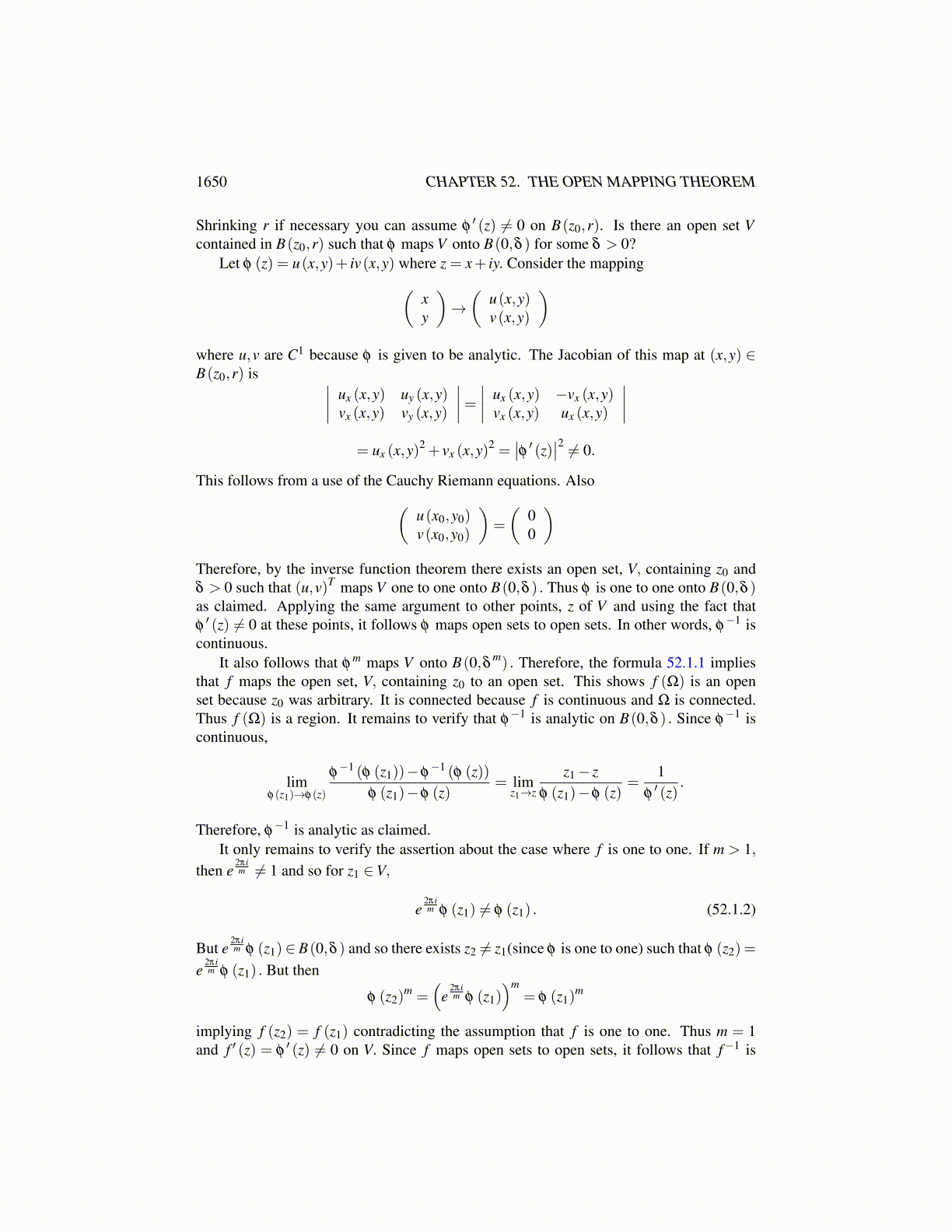
1650 CHAPTER 51. FUNDAMENTALS OF COMPLEX ANALYSIS
and B2 along with γ∗. Let the boundary of Bk consist of γ ([t1, t2]) and a circular arc,Ck. Now letting z ∈ Bk, the line integral of f (w)
w−z over γ∗ in two different directions
cancels. Therefore, if z∈ Bk, you can argue that f (z) = 12πi∫
Cf (w)w−z dw. By continuity,
this continues to hold for z ∈ γ ((t1, t2)) . Therefore, f must be analytic on γ ((t1, t1))also. This shows that f must be analytic on γ ((a,b)) . To get the endpoints, simplyextend γ to have the same properties but defined on [a− ε,b+ ε] and repeat the aboveargument or else do this at the beginning and note that you get [a,b]⊆ (a− ε,b+ ε) .
11. Let U be an open set contained in the upper half plane and suppose that there arefinitely many line segments on the x axis which are contained in the boundary of U.Now suppose that f is defined, real, and continuous on these line segments and isdefined and analytic on U. Now let Ũ denote the reflection of U across the x axis.Show that it is possible to extend f to a function, g defined on all of
W ≡ Ũ ∪U ∪{the line segments mentioned earlier}
such that g is analytic in W . Hint: For z ∈ Ũ , the reflection of U across the xaxis, let g(z) ≡ f (z). Show that g is analytic on Ũ ∪U and continuous on the linesegments. Then use Problem 10 or Morera’s theorem to argue that g is analytic onthe line segments also. The result of this problem is know as the Schwarz reflectionprinciple.
12. Show that rotations and translations of analytic functions yield analytic functionsand use this observation to generalize the Schwarz reflection principle to situationsin which the line segments are part of a line which is not the x axis. Thus, give aversion which involves reflection about an arbitrary line.